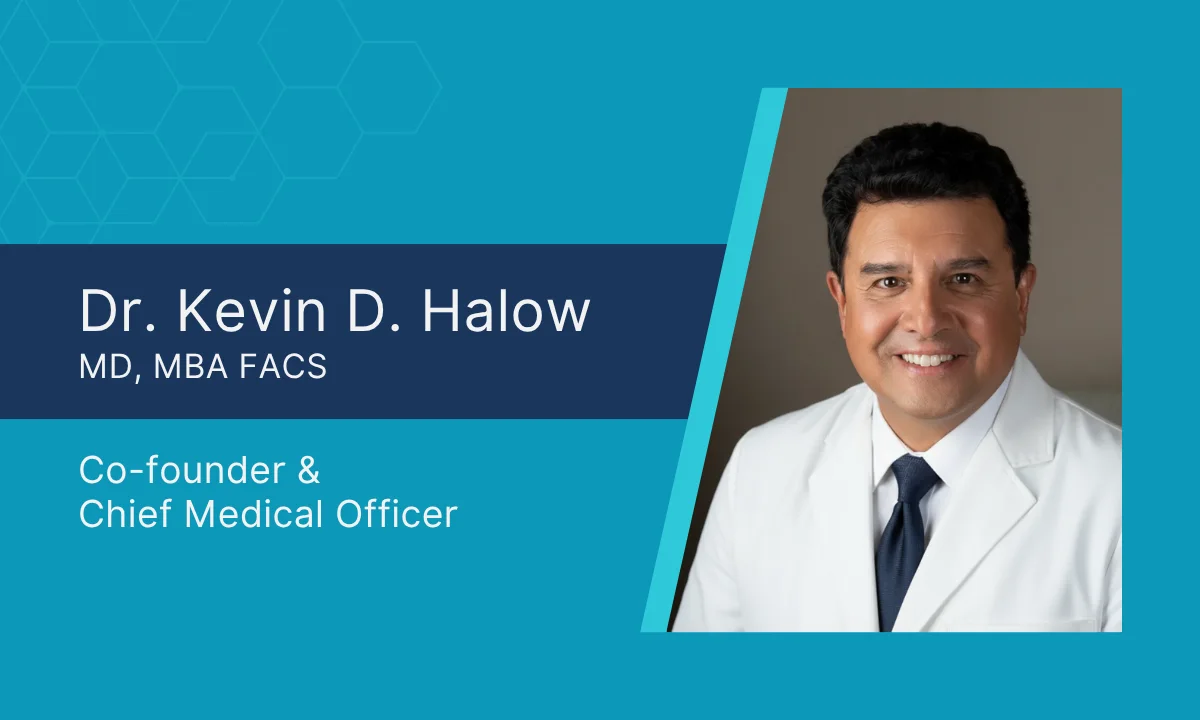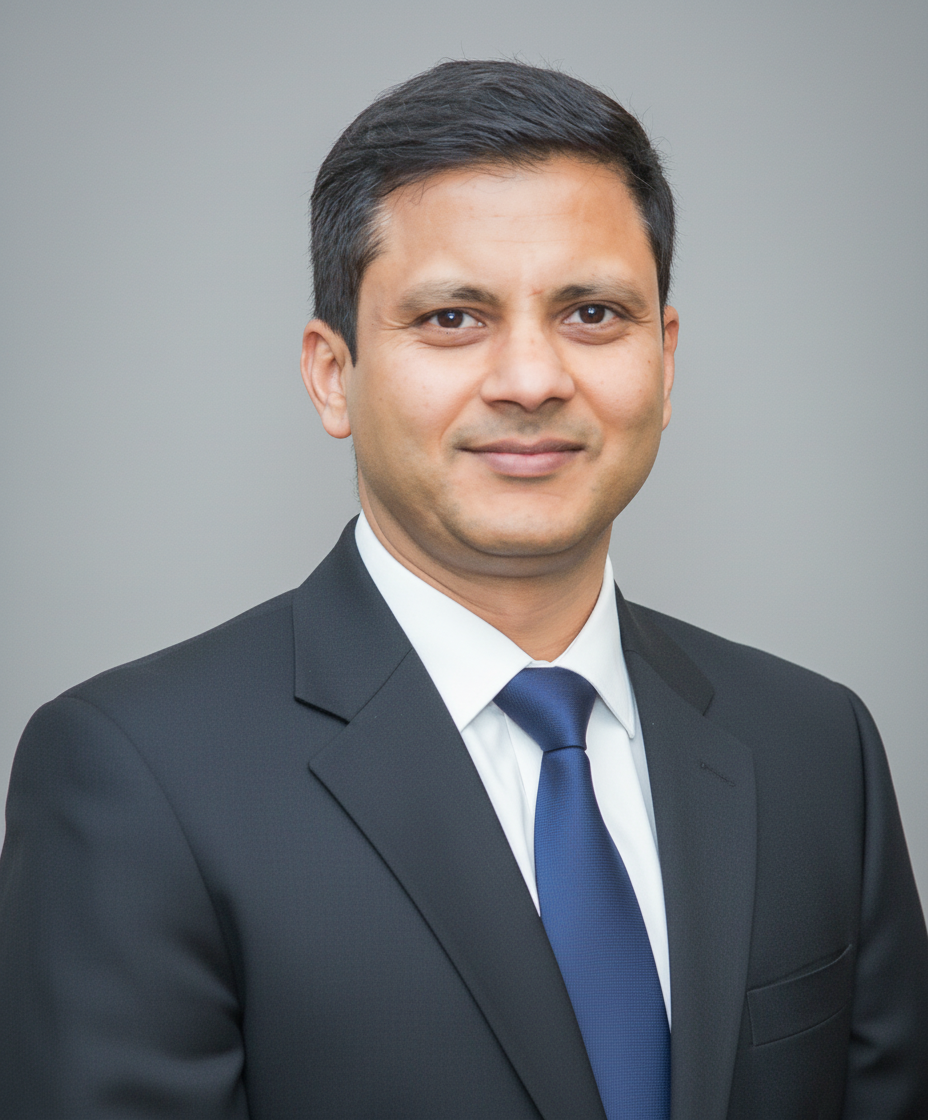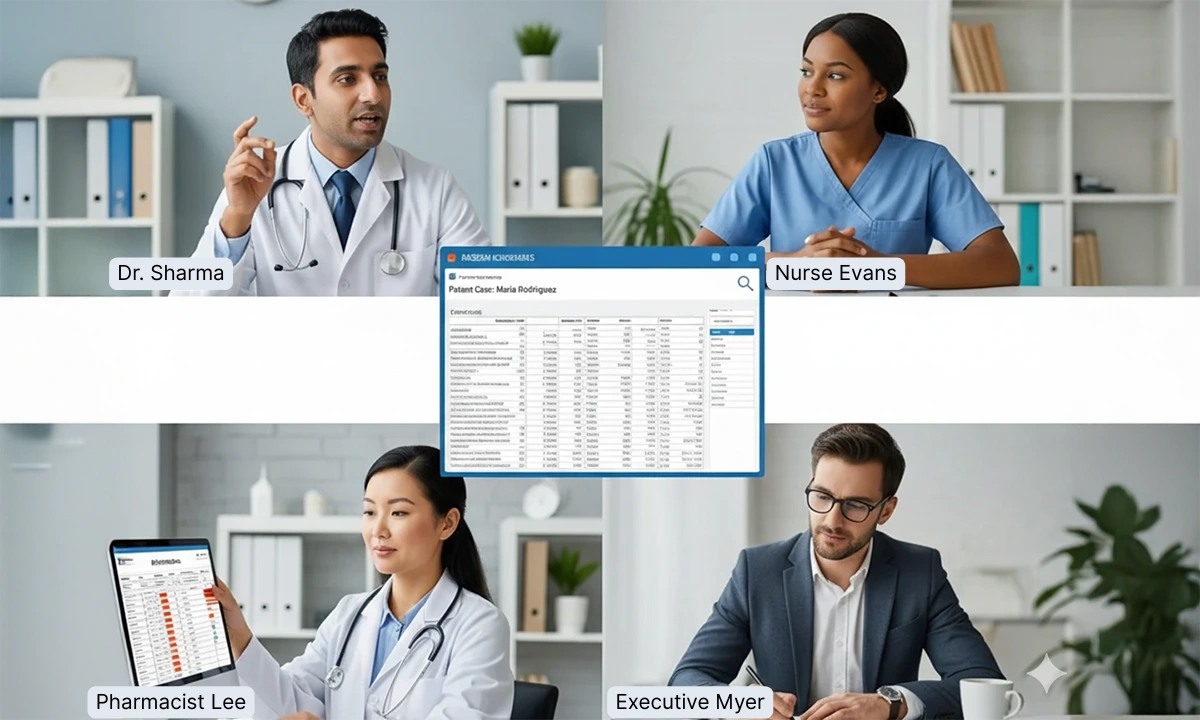Unified Communication Platform for Clinicians: A Physician’s Perspective: Dr. Kevin D Halow, MD
To provide context for this discussion, we are referencing the perspective of Dr. Kevin D. Halow, MD, MBA, FACS, a distinguished board-certified surgeon, fellow of the American College of Surgeons, and proud owner of Carson Surgical Group, serving Northern Nevada; Carson City, Carson Valley, Reno, and surrounding areas. A graduate of the U.S. Air Force Academy and Georgetown University School of Medicine, Dr. Halow completed his surgical residency and fellowship at Keesler USAF Medical Center before serving as a Lt. Colonel. His extensive credentials and frontline experience in a busy surgical practice inform his candid perspective on the challenges facing physicians today.
Dr. Halow comments:
“How do you engage with a physician to get their opinion on a critical management decision? Ask them to come to a meeting? That won’t happen. It’s not that physicians don’t care or don’t want to be involved. We simply don’t have time. We are too busy caring for patients in an inefficient healthcare system that wastes our time and our practice’s most valuable resource. Excessive workloads, insufficient rewards, and progressive isolation have led to disengagement and detachment from the organization. The practice of medicine has become increasingly depersonalized, leaving many of us emotionally exhausted, ” a sentiment widely reflected in recent industry reports on physician burnout and disengagement.”
Dr. Halow’s comments provide a candid and accurate diagnosis of a systemic ailment within modern healthcare: the erosion of physician engagement due to profound operational friction. The scenario he describes—the impossibility of convening busy clinicians for critical decisions—is precisely the challenge that a robust Unified Communication (UC) strategy is engineered to overcome.
His statement, “Ask them to come to a meeting? That won’t happen,” serves as the essential starting point. An effective Unified Communication platform does not challenge this reality; instead, it acknowledges it and builds an efficient and respectful solution around it.
What follows is a breakdown of how a unified, HIPAA-compliant communication platform directly addresses the challenges of inefficiency, isolation, and depersonalization he has articulated.
Engaging the Disengaged Physician: The Benefits of Unified Communication
Unified Communication is not an additional technological burden; it is a strategic shift in the way professionals interact. It is designed to honor the physician’s most critical asset: time.
1. From Scheduled Meetings to On-Demand Collaboration
This is the most direct solution to the problem you outlined. Instead of attempting to align multiple complex schedules, a Unified Communication Platform facilitates asynchronous input, effectively turning a one-hour meeting into a series of micro-interactions.
- The Unified Communication Approach: For a critical management decision, an administrator creates a secure, dedicated channel. They post a concise summary of the issue, attach relevant de-identified data or EMR snippets, and notify the specific physicians whose expertise is required (e.g., @Dr. Halow).
- The Physician’s Reality: You receive a single, secure notification on your preferred device. Between patient encounters or at a convenient moment in your day, you can review the entire context and provide your expert opinion via text or voice note. This meaningful contribution may take only three minutes of your time, contributed entirely on your own schedule, without ever entering a conference room.
2. Restoring Efficiency and Reducing Cognitive Burden
The systemic inefficiencies you referenced manifest as constant “context switching”—moving between the EMR, a pager, non-compliant personal devices, and an email client. A UC platform consolidates these fragmented streams.
- The UC Approach: A single, secure, HIPAA-compliant application serves as the central hub for professional communication and collaboration. It is designed to integrate with core clinical systems like the EMR/EHR, scheduling software, and laboratory reporting.
- The Physician’s Reality: You are no longer required to log into multiple disparate systems. A critical lab alert can be delivered to the same application where you consult with a specialist. You can escalate a nurse’s query to a pharmacist within the same conversation thread, preserving the complete context for all participants. This consolidation minimizes wasted time and mitigates the mental fatigue associated with incessant context switching, a recognized contributor to clinical cognitive load.
3. Combating Isolation with the “Digital Hallway”
Packed schedules have eliminated the informal yet invaluable “hallway conversations” that previously fostered collegiality and rapid problem-solving. A UC platform can digitally recreate this vital space.
- The Unified Communication Approach: Presence indicators show which colleagues are available, busy, or in a procedure. This visibility allows you to initiate a secure chat or video call with a specialist in another department to obtain a rapid consult.
- The Physician’s Reality: Instead of paging a colleague and awaiting a response, you see the cardiologist you need is “Available.” You can initiate an instant video call, share your screen to display an EKG, receive an immediate opinion, and document the interaction for later reference. This restores a sense of teamwork and makes you part of a responsive, collaborative organization rather than an isolated practitioner.
4. Re-Personalizing Medicine in a Digital Environment
Sterile EMR messages and impersonal email chains contribute significantly to emotional exhaustion. Effective communication is more than data transfer; it requires the nuance of human interaction.
- The Unified Communication Approach: The ability to seamlessly escalate a text-based chat to a voice or video call reintroduces the human element into professional dialogue. A quick voice note can convey tone and empathy far more effectively than text alone.
- The Physician’s Reality: A 60-second video call to discuss a complex case with a colleague feels more supportive and personal than a lengthy email exchange. It brings back the facial expressions and vocal nuances essential for genuine human connection, directly counteracting the depersonalization that often occurs in the medical environment.
How a Unified Communication Platform Will Redefine a Clinician’s Daily Workflow
Application in Practice: The Critical Management Decision (Unified Communication)
Let us apply this framework to your precise scenario.
The Conventional Method (The “That Won’t Happen” Approach):
- Management requires physician input on a new clinical pathway.
- An email is dispatched with a 20-page PDF attachment.
- An attempt to schedule a one-hour meeting results in calendar conflicts.
- The meeting is finally scheduled two weeks later; only two of the five key physicians can attend.
- A game of phone tag begins to capture feedback from the others. Input is fragmented, lacks shared context, and is difficult to collate.
- The decision is delayed, and the physicians who were not consulted feel disenfranchised.
The Unified Communication Method:
- Management creates a secure, HIPAA-compliant channel: “Decision: Proposed Sepsis Pathway.”
- A one-paragraph summary is posted with a two-page executive brief and the full PDF for reference. The five key physicians are mentioned.
- Physician A sees the notification post-procedure. They spend 90 seconds reading the summary and post: “Concern regarding Stage 2 antibiotic choice for patients with renal impairment. Suggesting [alternate].”
- Physician B, at home that evening, reviews the thread and Physician A’s comment. They reply: “Concur with Dr. A. The proposed alternative is our current standard of care. I support the change with that modification.”
- Within 24 hours, all five physicians have contributed on their own time. The entire “meeting” has occurred asynchronously, with full context for every participant.
- Management posts a final comment: “Consensus reached. We will modify the pathway per Dr. A’s suggestion. Thank you all for your timely input.” The decision is made efficiently, inclusively, and is fully documented.
Conclusion
Dr. Halow, your insights point to a fundamental truth: to solve physician burnout and disengagement, we must first respect the physician’s time as the practice’s most valuable asset.
Unified Communication
By integrating secure, flexible communication directly into the clinical workflow, we empower physicians to re-engage on their own terms. This strategic shift transforms detachment into active, meaningful collaboration, helping to restore the agency and professional satisfaction that are vital to a sustainable and effective medical practice.
A Physician’s Profile of Dr. Kevin Halow
This video offers a personal look at Dr. Kevin D Halow MD, where he discusses his career in surgery and his passions, providing deeper context to the perspective shared in the article.
Frequently Asked Questions (FAQs)
1. What is the main cause of physician disengagement?
The primary cause is an inefficient healthcare system that wastes physicians’ time through fragmented communication, excessive administrative burden, and professional isolation, making it impossible to engage in critical decisions without sacrificing patient care.
2. How does a Unified Communication (UC) platform get input without meetings?
It facilitates asynchronous collaboration. A decision or topic is posted in a secure channel, and physicians contribute their expert opinions at their own convenience, transforming a one-hour meeting into a series of efficient, brief interactions.
3. What is the “Digital Hallway”?
It is a virtual space created by a UC platform where you can view the real-time availability of colleagues, allowing for quick, informal, and highly effective consultations that used to happen in person.
4. How does a UC platform reduce the cognitive burden on doctors?
It consolidates multiple communication streams (pagers, texts, emails, alerts) into a single, HIPAA-compliant application. This drastically reduces the mental fatigue associated with constantly switching between different systems.






